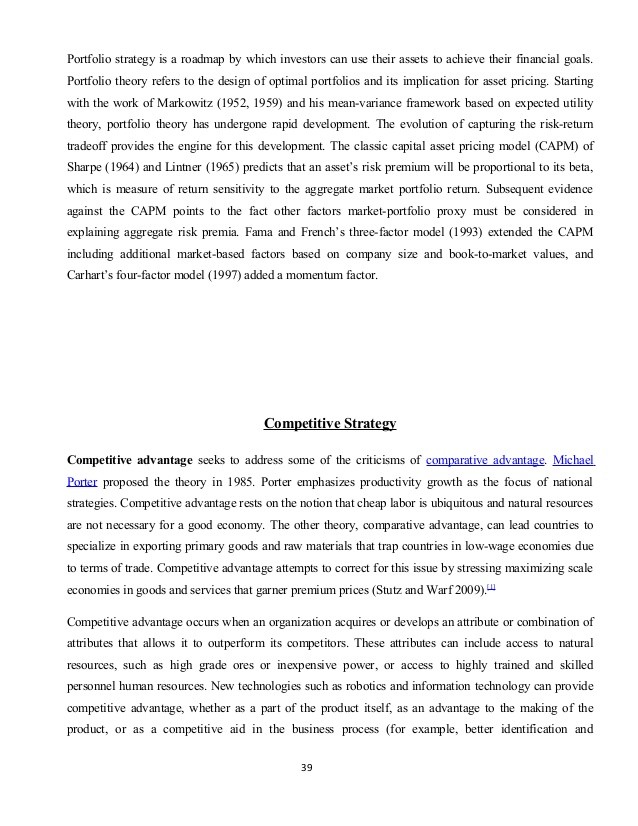MBA Course Knowledge Center Capital Asset Pricing Model (CAPM)
Post on: 16 Март, 2015 No Comment

Subject: Portfolio Management
Concept Definition and Explanation
Capital market theory extends portfolio theory and develops a model for pricing all risky assets
Capital asset pricing model (CAPM) will allow you to determine the required rate of return for any risky asset
Assumptions of Capital Market Theory
1. All investors are Markowitz efficient investors who want to target points on the efficient frontier.
The exact location on the efficient frontier and, therefore, the specific portfolio selected, will depend on the individual investors risk-return utility function.
2. Investors can borrow or lend any amount of money at the risk-free rate of return (RFR).
Clearly it is always possible to lend money at the nominal risk-free rate by buying risk-free securities such as government T-bills. It is not always possible to borrow at this risk-free rate, but we will see that assuming a higher borrowing rate does not change the general results.
3. All investors have homogeneous expectations; that is, they estimate identical probability distributions for future rates of return.
Again, this assumption can be relaxed. As long as the differences in expectations are not vast, their effects are minor.
4. All investors have the same one-period time horizon such as one-month, six months, or one year.
The model will be developed for a single hypothetical period, and its results could be affected by a different assumption. A difference in the time horizon would require investors to derive risk measures and risk-free assets that are consistent with their time horizons.
5. All investments are infinitely divisible, which means that it is possible to buy or sell fractional shares of any asset or portfolio.
This assumption allows us to discuss investment alternatives as continuous curves. Changing it would have little impact on the theory.
6. There are no taxes or transaction costs involved in buying or selling assets.
This is a reasonable assumption in many instances. Neither pension funds nor religious groups have to pay taxes, and the transaction costs for most financial institutions are less than 1 percent on most financial instruments. Again, relaxing this assumption modifies the results, but does not change the basic thrust.
7. There is no inflation or any change in interest rates, or inflation is fully anticipated.
This is a reasonable initial assumption, and it can be modified.
8. Capital markets are in equilibrium.
This means that all investments properly priced in line with their risk levels and investors will not get any benefit by exchanging their assets with other on the dimension of risk and return. If there change assets, risk will come down and return will come down or risk will go up and return will go up.














